136 scholarly books by Dartmouth College Press and 5
start with O
136 scholarly books by Dartmouth College Press and 5
136 scholarly books by Dartmouth College Press
5 start with O start with O
5 start with O start with O
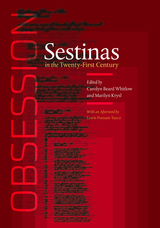
Obsession
Sestinas in the Twenty-First Century
Edited by Carolyn Beard Whitlow and Marilyn Krysl
Dartmouth College Press, 2014
The sestina (of medieval French origin) is a complex poetic form of 39 lines (six sestets and a three-line “envoy”) in which the six end-words (teleutons) of the lines of the first sestet stanza are repeated in a specific order as teleutons in the five succeeding sestets. In the envoy, the six teleutons are again picked up, one of them being buried in, and one finishing, each line. Because of the complexity of the form, the sestina fell out of favor with poets for several decades. However, a twenty-first century revival of the form is underway. This is the first anthology of sestinas that showcases both traditional and innovative examples of the form by modern and contemporary poets, award winners, and emerging writers alike. Organized by such themes as Americana; Art; Love and Sex; and Memory, Contemplation, Retrospection, and Death, the collection also includes sestinas with irregular teleutons and unconventional sestinas. An evocative introduction by Marilyn Krysl acquaints readers with the form. The volume concludes with useful indexes of first lines and teleutons, increasing access to the poems beyond the poets’ names.
[more]
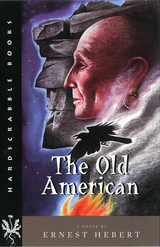
The Old American
A Novel
Ernest Hebert
Dartmouth College Press, 2001
In 1746, Nathan Blake, the first frame house builder in Keene, New Hampshire, was abducted by Algonkians and held in Canada as a slave. Inspired by this dramatic slice of history, novelist Ernest Hebert has written a masterful new novel recreating those years of captivity. Set in New England and Canada during the French and Indian Wars, The Old American is driven by its complex, vividly imagined title character, Caucus-Meteor. By turns shrewd and embittered, ambitious and despairing, inspired and tormented, he is the self-styled "king" of the remnants of the first native tribes that encountered the English. Displaced and ravaged by disease, these refugees have been forced to bargain for land in Canada on which to live. Having hired himself out as interpreter to a raiding party of French and Iroquois, Caucus-Meteor returns from New Hampshire the unexpected possessor of a captive, Nathan Blake. He decides to bring the Englishman to his own village rather than sell him to the French. Ambivalent about his former life, Blake gradually fits into the routine of Conissadawaga. Meanwhile, Caucus-Meteor struggles to protect his people from the rapacious French governor. Constantly plotting and maneuvering, burdened by responsibility, the Old American exhibits cunning and courage. A gifted linguist who was forbidden to learn to read or write; a former slave who is now a king; a native leader who has seen more of London and Paris than his English captive, who knows more of European politics than the French colonial administrators, Caucus-Meteor is a brilliant, cantankerous, visionary figure whom readers will long remember.
[more]
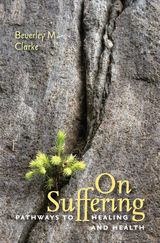
On Suffering
Pathways to Healing and Health
Beverley M. Clarke
Dartmouth College Press, 2011
Currently in medicine, theories of pain regard pain and suffering as one and the same. It is assumed that if pain ceases, suffering stops. These theories are not substantiated in clinical practice, where some patients report little pain and extreme suffering and other individuals have a lot of pain and virtually no suffering. Based on the results of a scientific questionnaire, as well as evidence from and conversations with hundreds of patients, Beverley M. Clarke argues convincingly that suffering is often separate from pain, has universal measurable characteristics, and requires suffering-specific treatments that are sensitive to the patient’s individual psychology and cultural background. According to Clarke, suffering occurs when individuals who have experienced a life change because of medical issues perceive a threat to their idea of self and personhood. This kind of suffering, based on a lost “dream of self,” affects every aspect of an individual’s life. Treating the patient as a whole person—an approach that Clarke strongly advocates—is an issue overlooked in the majority of chronic care and traumatic injury treatments, focused as they are on pain reduction. Clarke believes passionately that the management of suffering in medicine is the responsibility of all health care practitioners. Until they come to identify and understand suffering as distinct from pain, the entire health care system will continue to carry the financial and moral burden of incomplete diagnoses, inappropriate referrals for care, ineffective treatment interventions, and lost human potential.
[more]
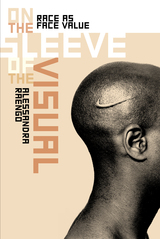
On the Sleeve of the Visual
Race as Face Value
Alessandra Raengo
Dartmouth College Press, 2013
In this landmark work of critical theory, black studies, and visual culture studies, Alessandra Raengo boldly reads race as a theory of the image. By placing emphasis on the surface of the visual as the repository of its meaning, race presents the most enduring ontological approach to what images are, how they feel, and what they mean. Having established her theoretical concerns, the author’s eclectic readings of various artifacts of visual culture, fine arts, cinema, and rhetorical tropes provoke and destabilize readers’ visual comfort zone, forcing them to recognize the unstated racial aspects of viewing and the foundational role of race in informing the visual.
[more]
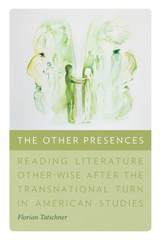
The Other Presences
Reading Literature Other-Wise after the Transnational Turn in American Studies
Florian Tatschner
Dartmouth College Press, 2019
Florian Tatschner examines an alternative mode of reading fictional texts in the context of North American literature through “reading other-wise”: a mode of reading that regards the other in narratives not merely as a discursive construct of alterity, but as a presencing of otherness that resists discursive fixity. Waldenfels’s phenomenology constitutes the foundational approach of this work, and Lyotard’s poststructuralist philosophy of language, with its distinction between discursivity and figurality, offers a suitable framework for negotiating the relation between otherness and alterity. Drawing on the increasingly significant term “presence” in connection with phenomenon of otherness, Tatschner attempts to close a scholarly gap in the discourse on aesthetics regarding cultural difference as well as the relation between presence and aesthetics in American studies.
[more]
READERS
Browse our collection.
PUBLISHERS
See BiblioVault's publisher services.
STUDENT SERVICES
Files for college accessibility offices.
UChicago Accessibility Resources
home | accessibility | search | about | contact us
BiblioVault ® 2001 - 2024
The University of Chicago Press









